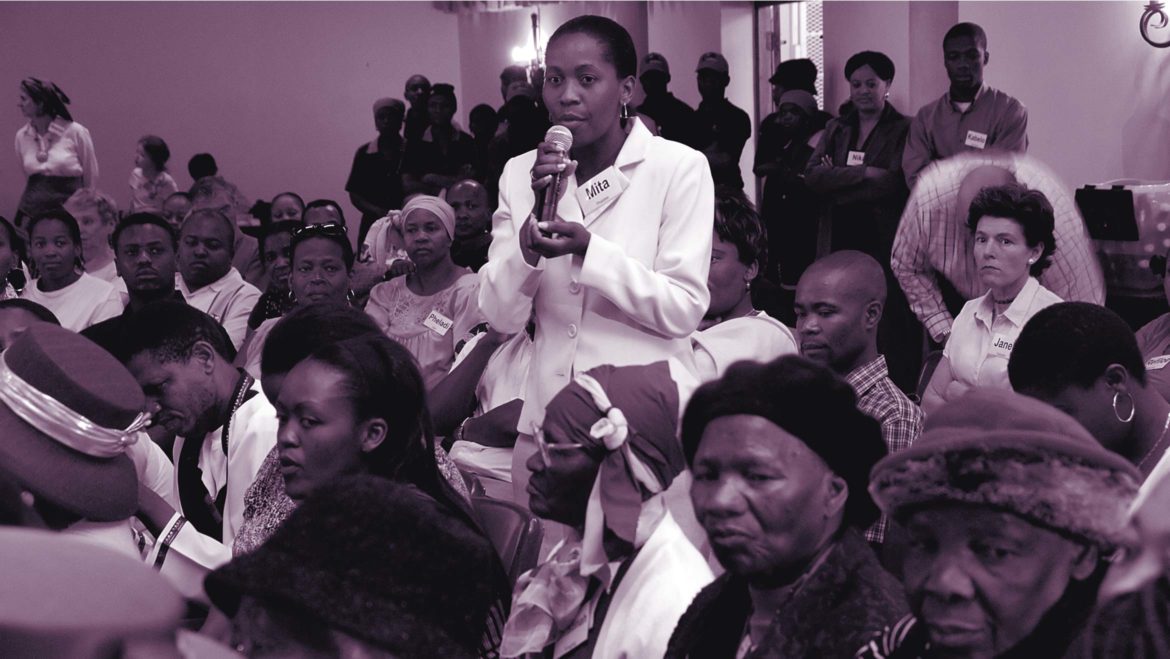
Tool 14 – Community Development Agreements
Community development agreements, derived from good faith agreements, have the potential to support a positive socio-economic development outcome and have been used for years in the mining industry. However, concerns have been raised and a more regulatory approach is being favoured. Potential benefits include that they offer a more structured engagement between companies and communities, help support mutual understanding and defuse tensions before they arise and voluntary agreements can also provide an effective way of administering aspects such as mitigation and compensation.
This tool can be used at any stage when voluntary conversations would benefit from a more formal, structured agreement-making process.
Step Guide
STEP
1
Establish basis for negotiations (See Top Tip card 1)
STEP
2
Understand the full context (p157) prior to entering into any formal agreement negotiations. Establish who in the community has the authority to negotiate on behalf of the community and who else should be included
STEP
3
Establish overall aims (p157) of the agreement, ensuring both parties have a thorough understanding of each other’s objectives, needs and the potential impacts of the project
STEP
4
Build understanding and respect, allowing time before embarking on formal negotiations
STEP
5
Build knowledge and capacity, ensure information on needs and objectives is presented in a meaningful way. Negotiations should be conducted on a level playing field
STEP
6
Manage internal disagreements – resolve company tensions and disputes prior to negotiating with communities
STEP
7
Establish agreement components (See Top Tip 2)
STEP
8
Implement the agreement (See Top Tip 3)
STEP
9
Set up appropriate governance processes, include monitoring and review requirements. Performance should be monitored against the aims of the agreement
Top Tips:
1) To establish the basis for successful agreements (p156), consider:
- all arguments, from all involved parties
- all groups including those considered marginalised, must be properly represented
- be open about information and prepared to work with traditional, local decision making processes
- negotiations and decision-making should be transparent to all parties, but also respective of certain issues remaining confidential on occasions
- focusing on the stability and sustainability of outcomes
- all negotiations should be adapted to local conditions and realities
- the negotiation process should be clear, agreed by all parties and fair. Companies should view it as their duty that all parties are completely informed, ensuring full participation in negotiations and agreements.
2) Potential components of agreements could include:
- financial payments and disbursement arrangements
- employment, training and contracting opportunities
- environmental, social and cultural impact management
- governance arrangements
- land access arrangements
- engagement mechanisms
- reciprocal obligations and what action to be taken if either side does not fulfill their obligations
3) To implement an agreement (p158), think about:
- agreement obligations should be fully documented and accessible
- responsibility is allocated and people know what is expected of them, early on
- one person has overall responsibility for the ongoing management of the agreement
- an up-to-date register records actions to ensure obligations are being addressed
- action plans are aligned with the agreement
- ongoing internal monitoring
- an awareness that both company and community personnel will change over time
- the aims of the agreement are constantly considered
Sources:
Centre for Social Responsibility in Mining, EI Source Book, Good Practice Note: Community Development Agreements, University of Queensland, 2011.
Sustainable Development Strategies Group, public library of materials related to Community Development Agreements (CDA) between resource companies and local communities.
